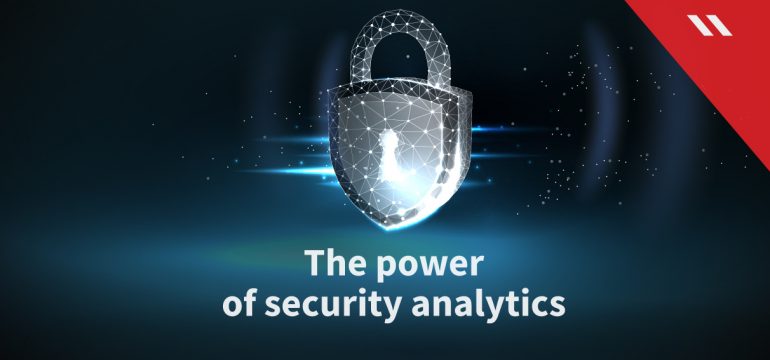Without data, you’re just another person with an opinion” – W. Edwards Deming
Widely used across different industries, security analytics is slowly making its way into the domain of cybersecurity — courtesy to this industry’s rising awareness about the power of data.
Security analytics in cybersecurity refers to the process of collecting, analyzing and using data for security monitoring and threat detection. This processed data if leveraged appropriately can introduce a cutting-edge in an enterprise’s threat protection framework.
Enterprises deal in terabytes of data every day related to network & endpoint traffic, employees, external sources, etc. resulting in a significantly high bi-directional flow of information in enterprise networks.
With an increasing number of threats (penetrating through the aforementioned information exchange) and businesses waging a war to eradicate threat vectors, stakeholders are realizing that data-backed security analytics have the capability to further bolster the foundation of enterprise cybersecurity.
So how can security analytics exactly help? Here is a brief snapshot of the same –
Detection of anomalies
Traditional cybersecurity functions out of a model wherein malicious threats are scanned by matching these with a list of pre-identified malware formats known as signatures.
Although these signatures are updated periodically, they can never cover every attack vector, resulting in the possibility of a cyberattack through new threats or vulnerabilities that are undiscovered.
Analytics complement this signature method by detecting and reporting anomalies instantly that are not a part of the existing list of malware made available to cybersecurity experts in an enterprise.
Anomaly detection substantially reduces the possibility of a cyberattack.
Threat prevention
It is essential for enterprises to prevent threats from penetrating their systems rather than taking reactionary steps after a successful cyberattack.
Analytics can help an enterprise increase its threat prevention capabilities by red-flagging susceptible attack channels to individuals responsible for cybersecurity.
Detailed insights
Security analytics remove the guesswork from cybersecurity — by analyzing data, it is possible to gain a greater understanding of the origins of a threat, its specific target and its exact action.
This is important information for businesses, enabling them to take specific actions required to neutralize such threats rather than take an overriding approach hoping to cover every known threat —this rarely works.
Better & more effective compliance through security analytics
Modern-day digital businesses operate in a tightrope walk scenario, dealing with external threat actors while also having to maintain compliance with government and industry regulations.
Governments all over the world are imposing regulatory compliance in regards to cybersecurity and data protection which enterprises are bound to comply with, at the perils of great financial and/or legal punishment.
The nature of these regulatory compliances requires effective security analytics to provide compliance managers with the tools to understand complex data in order to identify and close cybersecurity loopholes.
Seqrite understands the importance of security analytics integrating them in the core of its premium security products, some of which are –
- Seqrite Endpoint Security (EPS) – provides detailed insights into every connected endpoint for uniform asset management
- Unified Threat Management (UTM) – aids enterprises in blocking cyber threats specific to penetration via internet networks
- Seqrite mSuite – helps businesses in effortless management of mobile devices
Taking it a step ahead, Seqrite is now the proud recipient of a patent granted by the prestigious USPTO for its innovative Signature-less Behaviour-Based anti-Malware technology powered by Artificial Intelligence.




